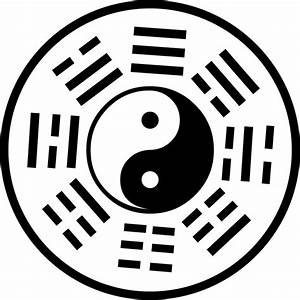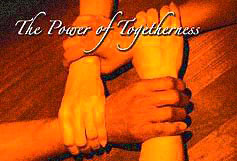All Children Are Our Children
A study commissioned by the Dave Thomas Foundation for Adoption showed that nearly 40% of American adults, or 81.5 million people, have considered adopting a child. If just one in 500 of these adults decided to adopt, all of the 134,000 children in foster care waiting for adoption would have a permanent home.
I’ve written before about my experiences volunteering at a local group foster home. It’s actually a residential treatment and crisis care center. While there are many children who live there for varying amounts of time, I have been lucky enough to establish relationships with a handful of them. I love these kids. I feel like they are my children. And in a very real sense, they are mine. And they are yours. They are a part of our community, and they are a part of ourselves.
When I first committed to this “job” I agreed to come in for two hours a week, for four weeks. I’m now averaging four hours a day, five days a week, and I just was there for eleven days in a row. I’m well into my sixth month, and I can’t imagine stopping ever. Being a volunteer means that I am not paid, and spending this much time at the place actually costs me lots of money each week. I can’t help but bring fresh fruit and books and things like that. I make the time because this is important. I spend the money because I would rather help these kids than save up to buy a designer purse.
More and more we are learning that we live in a global community. We see how much of what happens in other communities, and other countries, has an affect on our own lives. And because of the internet and ease of travel, it’s easier for us to reach out and help children not only in our hometowns, but around the world.
I recently met Vivian Glyck, an amazing woman who has made a difference by following her vision. She says that after becoming a mother, she developed “a keen sense that the world is so small, it is really just one community, and I realized that taking care of oneself means heeding one’s calling – without hesitation or deliberation.” Vivian’s calling is helping children in Uganda. Why? Because 25 million Africans, many of whom are children, are infected with the HIV virus. Every 30 seconds a child in Africa dies of malaria. 12 million children are already orphaned by AIDS. Vivian travels to Africa and works with children personally, and she says they are “just like my child” which is why she named her organization “Just Like My Child.” The mission is to alleviate the suffering of women, children, and families in rural Uganda by empowering communities to create their own long-term solutions to healthcare, education, and microenterprise. Read more about Vivian’s story at: justlikemychild.org
My friend Lysa Heslov is also helping children with her foundation Children Mending Hearts. Her mission is to give children worldwide the power to find and use their voices through creative expression. This is a global arts exchange between at-risk children in America and children living in conflict zones around the world that educates, empowers and encourages all the participants. People of various cultures connect the different projects, and learn and grow from their experiences with each other. Lysa has traveled to the Congo and worked with children first hand. And now her foundation is traveling around the United States to conduct art workshops. For more information visit: childrenmendinghearts.org
My friend Joseph Curiale saw a news story on CNN which compelled him to start a foundation to help orphaned girls in India. Right now there are four girls going to school on scholarships, who would otherwise be living in poverty in a government orphanage. Joe has traveled back and forth to India 12 times to make sure that these children, whom he considers his own, are getting the support, and the love, that they need. Joe is a testament to how one person can make a difference in this world. The work he has done is remarkable. Read more about his story at: josephcurialefoundation.com
Through organizations like Plan USA we can sponsor an individual child, and help that child’s family and community as well. Sponsorship helps to provide vaccination and nutrition programs, community water systems and well construction, home and health clinic construction, school and teachers, and so much more. As a sponsor you receive a photo of your child, a family profile to introduce you and provide information about the community, and regular updates on how everyone is doing. You can send letters and small gifts, and you can even visit your child! This sponsored child becomes your ambassador to a place and culture that you might otherwise never know. I began sponsoring Swapna, a little girl in rural India, in 2005. I’ve been able to see her grow and communicate through Plan USA’s field office volunteers. We don’t speak the same language, and the geographical distance is great, but we are connected through our hearts. She is a beautiful child, and I am grateful to be able to contribute to her life in some way. If you’re interested in sponsoring a child, visit: planusa.org
All children are children of the world. All children are our children.











 “All things whatsoever ye would that men should do to you, do ye so to them; for this is the law and the prophets” – CHRISTIANITY
“All things whatsoever ye would that men should do to you, do ye so to them; for this is the law and the prophets” – CHRISTIANITY what you would not have them do unto you.” HINDUISM
what you would not have them do unto you.” HINDUISM
 ways that you yourself would find hurtful.” BUDDHISM
ways that you yourself would find hurtful.” BUDDHISM “No one of you is a believer until he desires for his brother that which he desires for himself.” ISLAM
“No one of you is a believer until he desires for his brother that which he desires for himself.” ISLAM fellow man. This is the entire Law; all the rest is commentary.” JUDAISM
fellow man. This is the entire Law; all the rest is commentary.” JUDAISM “Regard your neighbor’s gain as your gain and your neighbor’s loss as your own loss.” TAOISM
“Regard your neighbor’s gain as your gain and your neighbor’s loss as your own loss.” TAOISM doing to another whatsoever is not good for itself.” ZOROASTRIANISM
doing to another whatsoever is not good for itself.” ZOROASTRIANISM